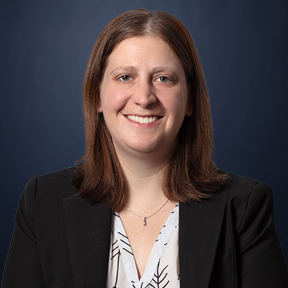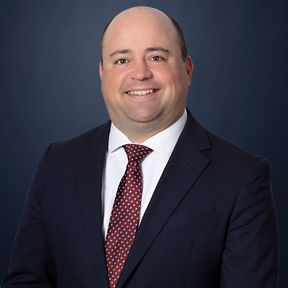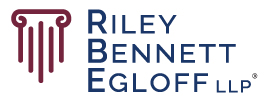Copyright law and the monument industry: Does my monument design infringe a copyright?
By: Jaclyn Flint and Kevin Tharp, AttorneysSpecial thanks to the Monument Builders of North America, for whom we originally wrote this article, for allowing our Firm to republish this article on our website.
When friends and family select a monument to mark the last resting place of their recently-deceased loved one, their focus is on whether they like the monument’s design, and not whether that design is protected by copyright law. Builders and resellers of monuments should think twice before making the same mistake.
Copyright protection is commonly understood to apply to creative works such as books, motion pictures, music, and works of art, but can also extend to other types works of works—including monuments—so long as they are “original works of authorship fixed in any tangible medium of expression [. . .] from which they can be perceived, reproduced, or otherwise communicated[.]”[i] There is no ‘blanket’ rule stating that all monuments are—or are not—protected by copyright law. Instead, whether monument designs are eligible for copyright protection must be determined on a case-by-case basis. As the definition suggests, to qualify for copyright protection, a monument must be (1) a work of “authorship,” (2) fixed in a tangible medium, that is (3) “original” to the author. If any of those three (3) elements is missing, the monument is not eligible for copyright protection.
The Copyright Act identifies several categories of “works of authorship.” Among those categories are “pictorial, graphic, and sculptural works,” which can include monuments.[ii] In addition, because monuments are (of their nature) fixed in a tangible medium such as stone, monuments almost always satisfy the second element of copyright protection. Thus, questions as to whether copyright protection applies to a monument almost always involve the third element, i.e., whether the work was “original” to the author.
To be “original” to the author, the work must be independently created by the author and possess “some minimal degree of creativity.”[iii] “Originality [. . .] means that the work must not consist of actual copying.”[iv] While “a copy of something in the public domain will not, if it be merely a copy, support a copyright, a distinguishable variation will[.]”[v] The variation will support copyright protection if the author’s contribution is “something more than a ‘merely trivial’ variation, something recognizably ‘his own.'”[vi] “[T]he requisite level of creativity is extremely low; even a slight amount will suffice. The vast majority of works make the grade quite easily, as they possess some creative spark, no matter how credo, humble or obvious it might be.”[vii]
A copyright owner has certain exclusive rights, which include:
(1) reproducing the copyrighted work;
(2) preparing derivative works based on the copyrighted work;
(3) distributing copies (by sale or otherwise); or
(4) displaying or performing the works publicly (e.g., a motion picture or sound recording).[viii]
Anyone who (without the copyright owner’s consent) violates those exclusive rights is generally considered an infringer of the copyright.[ix]
Because copyright protection attaches to a work as soon as it is created, those monuments eligible for copyright protection are protected from the moment their designs are complete.[x] However, enforcement of copyright occurs through an infringement lawsuit, which can be filed only once the copyright owner has registered the copyright with the United States Copyright Office.[xi] In Court, the copyright holder’s registration does not conclusively prove that the asserted copyright is valid; instead, the burden shifts to the accused infringer to present evidence attacking the validity of the copyright, such as ownership and originality.[xii]
To prove copyright infringement, a copyright owner bears the burden to prove that the defendant copied the copyrighted work.[xiii] In the absence of any direct evidence of copying (e.g., testimony from a witness who observed the copying), infringement is most commonly established through circumstantial evidence establishing the following two elements. First, the two works at issue must be substantially similar. To determine whether two works are “substantially similar,” courts will typically focus on whether an ordinary observer, who is not tasked with detecting differences, would find that the two works have the same aesthetic appeal. Where a copyrighted work incorporates elements that are within the public domain and are not original to the author of the work, the substantial similarity must be based on the original elements only. Second, the accused infringer must have had “access” to the copyrighted work. In this context, “access” means that the accused infringer had a reasonable (not simply any) possibility of being exposed to the copyrighted work. Such “access” must be based on actual evidence, not speculation or conjecture.
It is critically important that the copyright holder prove that the copying includes original elements of the copyrighted work, absent which the holder’s claim of infringement must fail. While this is important in any claim of copyright infringement, it is especially important in the monument industry because there are so many common design elements that have been widely used for such a long period of time that those elements have become part of the “public domain,” such that no one can lawfully claim the exclusive right to use them.
Even if a copyright holder can establish that one or more original elements in its work were copied, the accused infringer may escape liability by establishing one or more of several defenses to infringement. One such defense is that the copying was part of a “fair use” of a copyrighted work (i.e., for the purposes of criticism, comment, news reporting, teaching, scholarship, or research). Another defense is based on the copyright holder’s misuse of the copyright (i.e., copyright holders applying their copyright in in a way that would strong arm commercial actors to agreeing to grant the holder a limited monopoly that is not granted by copyright law). Such defenses to a copyright infringement claim are highly fact-specific and are not applicable in all cases.
Once infringement is proven, there are several potential remedies available to the copyright owner. Those remedies include equitable relief (e.g., a Court Order that directs the infringer to cease its infringing activities and to dispose of the infringing articles); monetary awards; and attorney fees and costs. Monetary awards fall in two categories: (a) actual damages (i.e., the copyright holder’s actual monetary injury suffered as a result of the infringement, plus any profits of the infringer that are attributable to the infringement that are not taken into account in computing the holder’s actual monetary injury); or (b) statutory damages. Because actual damages can be difficult to prove, copyright holders often seek statutory damages instead, which do not require specific proof. A Court has discretion to award statutory damages against an infringer for all infringements of a single work in a sum of not less than $750 or more than $30,000. If the copyright holder proves that the infringement was committed willfully, the amount of statutory damages can increase up to $150,000. If, in contrast, the infringer shows that he was not aware and had no reason to believe that his acts constituted an infringement of a copyright, the Court may reduce the award of statutory damages to a sum of not less than $200.[xiv] In addition, a Court may (but is not required to) award a copyright holder its attorney fees incurred in bringing the lawsuit.
The registration date of a copyright can also affect the copyright holder’s monetary award. Generally speaking, if the infringement occurred before the copyright was registered, the copyright holder cannot recover statutory damages or attorney fees but instead is limited to recovering only its actual damages or lost profits.[xv]
In sum, there are a number of factors to consider in determining whether a particular monument is eligible for copyright protection, whether infringement has occurred, and (if so) what remedies are available for infringement. The magnitude of the potential remedies for copyright infringement should lead monument builders and resellers to consider the sources of their monument designs and whether they have potential exposure to claims of copyright infringement.
If you have further questions regarding copyright ownership, copyright registration, or infringement of a copyright, please consult an attorney for further guidance on how best to manage your design portfolio or to address any potential claims of copyright infringement and available defenses.
[1] Attorneys at law, Indianapolis, Indiana, www.rbelaw.com
[1] 17 U.S.C. § 102(a).
[1] 17 U.S.C. § 102(a)(5).
[1] Feist Publ’ns, Inc. v. Rural Tel. Serv. Co., 499 U.S. 340, 345 (1991).
[1] L. Batlin & Son, Inc. v. Snyder, 536 F.2d 486, 490 (2d Cir. 1976).
[1] Gerlach-Barklow Co. v. Morris & Bendien, Inc., 23 F.2d 159, 161 (2d Cir. 1927).
[1] Snyder, 536 F.2d at 490 (quoting Alfred Bell & Co. v. Catalda Fine Arts, Inc., 191 F.2d 99, 103 (2d Cir. 1951).
[1] Feist, 499 U.S. at 345 (internal quotations omitted).
[1] 17 U.S.C. § 107.
[1] 17 U.S.C. § 501(a).
[1] Fourth Estate Public Benefit Corp. v. Wall-Street.com, LLC, 139 S. Ct. 881, 887 (2019).
[1] 17 U.S.C. § 411(a); Fourth Estate, 139 S. Ct. at 887.
[1] Syntek Semiconductor Co. v. Microchip Tech. Inc., 307 F.3d 775, 781 (9th Cir. 2002); Entm’t Research Grp., Inc. v. Genesis Creative Grp., Inc., 122 F.3d 1211, 1217 (9th Cir. 1997).
[1] Feist, 499 U.S. at 361.
[1] 17 U.S.C. § 504(c)(2).
[1] 17 U.S.C. § 412(1).

Jaclyn Flint – Attorney at Law
Jaclyn represents and advises clients in a wide variety of business, insurance and litigation matters, including matters related to commercial litigation, sports, media, intellectual property, contractual disputes, technology licensing, and corporate formation.
In 2023, Jaclyn completed the Indiana State Bar Association’s Leadership Development Academy. While attending the Indiana University Robert H. McKinney School of Law, Jaclyn served as an Executive Articles Editor for the Indiana Law Review and as the President of the Indiana University McKinney Sports and Entertainment Law Society. Jaclyn also acted as a Dean’s Tutorial Society Fellow, providing guidance and tutoring services to first-year law students, and as a research assistant to Professors Michael Pitts and Xuan-Thao Nguyen.

Kevin Tharp – Attorney at Law
Kevin Tharp’s diverse business and litigation practice focuses on the construction industry. Kevin counsels owners, general contractors and subcontractors, and represents them in disputes involving claims for payment, delay, and design and construction defects, as well as mechanic’s liens.
Kevin also counsels clients in the selection and formation of business entities, mergers and acquisitions, business selection planning, and general contractual matters.
© Riley Bennett Egloff LLP
Disclaimer: Article is made available for educational purposes only and is not intended as legal advice. If you have questions about any matters in this article, please contact the author directly.
Permissions: You are not permitted to reproduce this material in any format without the express permission of Riley Bennett Egloff LLP and the Monument Builders of North America, for whom this article was originally written.
Posted August 21, 2024, by Jaclyn Flint and Kevin Tharp
